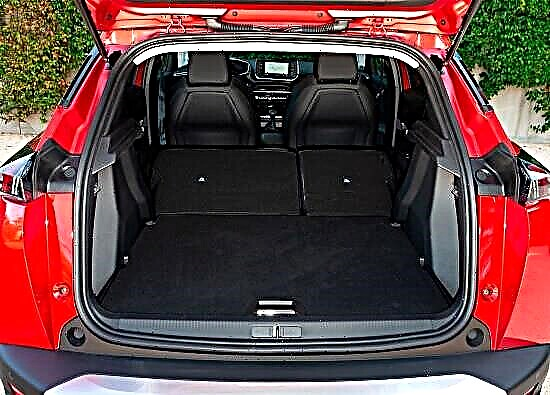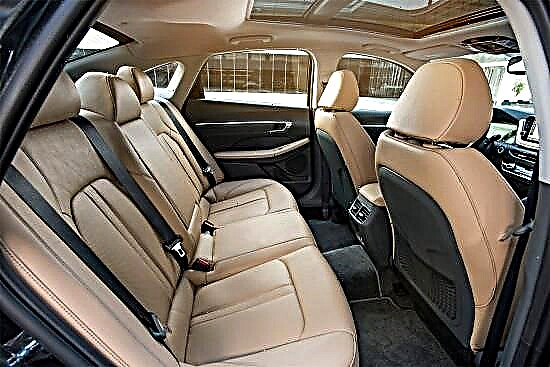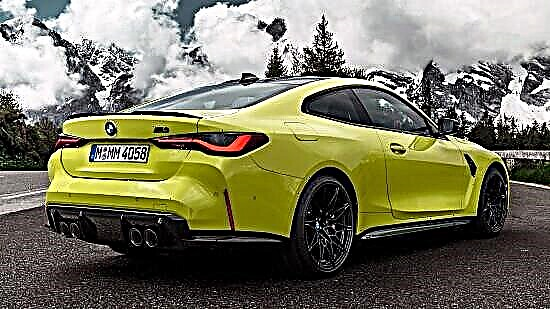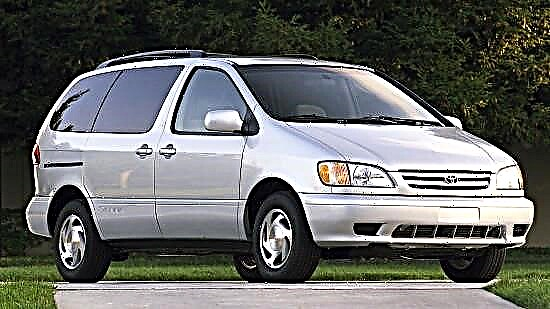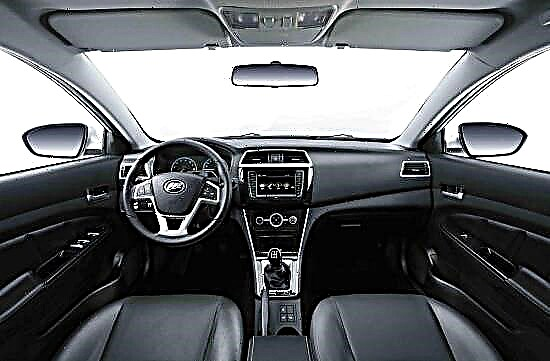Ratings of cars and auto products
Reviews, comparisons & tips for motorists
Buying a DVR, the car owner gets at his disposal a fairly useful and important tool. It helps protect yourself from unscrupulous law enforcement officials, prove your innocence in an accident, find the culprit, or just accidentally record an important, and sometimes just an interesting and entertaining video. After all, how many unique shots fell on the registrars.
In order for the recording device to record everything with high quality, keeping the full volume of important and necessary information, the device must have the appropriate memory. It is hardly worth counting on the internal memory capacity, since it is usually limited to a few gigabytes, or is absent at all.
You need to make the right choice in favor of a high-quality and efficient memory card, suitable specifically for your DVR. Recorders may have some limitations, as well as impose requirements on the cards themselves. It's not enough just to buy the device with the largest volume. This issue should be approached much more carefully, studying all the key characteristics.
Before choosing a memory card or just a USB flash drive, study the features and parameters of the recorder itself. Depending on the model and capabilities, such devices can record in continuous or cyclic mode.
- Continuous mode. In such recorders, video is recorded constantly, and until the moment when the card runs out of free space. If the space runs out, recording stops. To resume recording, you need to clear the drive or install a new one. The disadvantage of continuous mode is that it eats up a lot of memory unnecessarily, and may also fail to retain really important information in emergencies.
- Cyclic mode. Contrary to popular belief, it is preferred by drivers. Here the video is recorded partially, saving it as separate files. The length of one cycle is often adjustable and can be anywhere from 3 to 15 minutes. When the memory becomes full, the oldest files are automatically deleted and recording does not stop. The downside is that an important or needed file may not be saved due to its replacement with new ones.
- Hybrid mode. DVRs are also available that can use both modes. Useful and efficient models, differing in the strengths of the two recording modes presented, but also characterized by similar weaknesses. But at any time, you can choose the mode that you need.
Most motorists choose registrars with cyclic or hybrid operation. But then everyone decides for himself what suits him best. Indeed, in some cases, it is really important to constantly record what is happening on the road.
Memory card selection criteria
Having bought a recording device for a car, not all motorists think about how to choose the right memory card for a DVR. This is due to the fact that they have a free flash drive, or a card is already included in the kit. But components do not always have good characteristics. A high-quality and modern flash drive is expensive, and few manufacturers are ready to give it away for free.
There are several main criteria related to which kind of flash drive should be chosen for a car DVR. These include:
- recording device compatibility;
- format;
- speed class;
- volume.
Each of these issues requires separate and detailed consideration.
Modern car registrars can have excellent performance and wide capabilities. But you won't be able to fully implement them without a suitable card. When the device is capable of storing video in QHD or even 4K format, and the card is not adapted for this, the meaning in such parameters is lost.
Therefore, it is important to figure out which memory card is really better and preferable to take for your DVR. If you can manage to get a suitable and efficient storage device, the recorder will be able to perform well and to its fullest potential.
Compatibility issue
The first step towards which memory card you need to take for your DVR is to understand the compatibility of your recorder and storage device.
There are no universal cards as such, therefore there is no single type that can correspond and be used within different registrars. Small devices like tablets and smartphones require microSD cards. In the case of DVRs, the format is usually SD.
There is nothing difficult in how to choose the right memory card for your car DVR. All you need to do is look at the technical documentation or look into the slot intended for the drive.
Once upon a time, the main drive was a CF card or CompactFlash. But in the modern world it is rather difficult to meet them. They were replaced by more compact and high-speed counterparts.
The main and most common format for recorders is SD cards. They are Secure Digital. Already now you can find models with a memory of 1-2 terabytes. If you have a recorder from one of the leading manufacturers and a fairly modern model, then you will almost certainly need an SD.
More and more often, new devices support SD and microSD. The latter are extremely compact in size, which is why it is not very convenient to work with such flash drives, they are easy to lose. A separate slot is provided for them, or an SD adapter is used, into which a microSD drive should be inserted.
No one better and more precisely than the manufacturer will tell you which memory cards and drives are suitable for a particular model of the DVR. If you take an incompatible format, there is only one thing to do. Return to the store, issue a return and pick up a suitable drive.
Speed class
Just choosing a compatible drive is not enough. This is just the first step. To fully understand which kind of flash drive will be the best for your car DVR, you should take a look at its speed class.
In the description and in the instructions, you can often find information that the DVR is designed to work with class 10 SD and microSD drives. This effectively means maintaining a minimum write speed of 10 megabits per second (Mbps). But the real speed will be higher, although it can be determined only with the help of special programs.
If you do not know what class of memory should be for the flash drive of your DVR, then take at least 10. The marking of this class is presented in the form of the letter C, inside which the number 10 is drawn.
All class 10 drives are capable of supporting the Ultra High Speed format, that is, they work with information at a speed measured in tens of Mbps.
Regarding the speed of the storage device for the recorder, you can proceed according to 2 principles. It all depends on the format in which the registrar works.
- DVRs capable of recording video in FullHD and HD formats work well with UHS 1 drives, that is, at a speed of at least 10 Mbps. They can be identified by the marking in the form of the letter U, inside which is the number 1. U is also often called a horseshoe.
- For more expensive recorders, recording in QHD and 4K formats is typical.Then you need a card with a speed of 30 Mbps or UHS 3. Here the marking is the same, that is, the letter U or a horseshoe, but with the number 3 inside it.
Having figured out the speed, you can move on to the format of the drive.
Format
You are still undecided on which of the memory cards is better to choose for your DVR. It's okay, since some key questions have not yet been answered.
Based on the parameters of the speed at which the flash drive processes data, it is much easier to determine the optimal format. Often, the manufacturer himself indicates which drives are preferable to use for his device.
Currently, based on the recommendations of the DVR manufacturers, the most common and optimal options are a micro SD memory card with an adapter or SD adapter. This kills two birds with one stone at the same time, since you don't have to worry about whether the drive will fit into the DVR slot.
But it will not be superfluous to look at the speed, comparing it with the format. This is how you can answer the question regarding which memory card is preferable to put in the DVR:
If an auto recorder satisfies a UHS 1 speed drive, you don't have to spend a lot of money on expensive flash drives. A standard microSDHC card is enough;
If the recording is in QHD and 4K format, the speed is required UHS 3, then the card is better to take the microSDXC format.
MicroSDHC cards are commercially available that record at speeds over 30 Mbps. This is a good way to save money, but at the same time get an efficient and workable USB flash drive.
Memory
Most often, motorists are interested in how much memory is actually needed for the DVR to work. It depends on a number of factors. It is fair to say that more volume gives more opportunities. Indeed, due to the impressive volume, the amount of stored information increases.
When choosing the volume, do not forget that drives of different formats in this component are limited. The most common microSDHC flash drives can hold up to 32 GB. And if we take the microSDXC format, then they have from 32 Gigabytes or more. There are also models with a gigantic volume of 1 TB, but in fact this is a lot, and almost no DVR in the world can cope with such a volume. The registrar simply does not count this card.
You can answer how much memory is actually needed for your DVR as follows. The lower the quality and resolution of the recording the recorder supports, the less gigabytes you need.
For top-tier registrars, the maximum size is required. Plus, some devices simultaneously record date, time, coordinates and various metadata on the video, which ultimately increases the file weight.
In the case of most modern registrars of the middle price range, as well as more expensive models, the current volume is considered to be from 32 to 64 Gigabytes. This is the minimum for microSDXC drives and also the upper limit for microSDHC cards. 32 gigabytes is enough to record about 160 minutes of Full HD video or about 2 hours of 4K.
There are recorders for machines that are strictly limited in the amount of cards that can be read. Some models cannot even work with 32GB drives. This point should be taken into account when buying the DVR itself, which is also not very easy to choose.
Additional features
Memory cards that look identical can have completely different characteristics and functionality. Therefore, the issue of choice must be approached especially carefully, relying at least on key parameters.
But there are also some additional options. You will probably have to pay extra for them. And you need to decide if the additional costs are worth it, or if these are extra options specifically in your situation.
- Waterproof. Electronics are not friendly with water and moisture. But there is a special Water Proof technology that improves water resistance. For a regular car DVR, this is an extra option. And if you use an action camera as a recorder, and at the same time dive under water with it, then you will definitely need a waterproof flash drive.
- Impact resistance. Again, the prerogative for action cameras, which are often used in the role of video recorders. Also a useful option for motorcyclists who attach the recorder to their helmet. If dropped or struck, the chances of losing all data will be much lower due to the impact resistance.
- Protection against temperature extremes. The option is referred to as Temperature Proof. Not a superfluous addition for those who have the recorder installed under the windshield, through which the device is actively heated under the influence of sunlight. Overheating is destructive for some drives.
- Radiation protection. This option will not hurt in some situations. But in practice, it is needed in rare cases. But the very fact of the presence of such an option suggests that someone needs it.
The presented additional features and characteristics are offered separately or come together. And the more options, the more expensive the drive will be. Moreover, the difference in price can be multiple in comparison with a flash drive with the same parameters, but devoid of these options. Draw your own conclusions.


